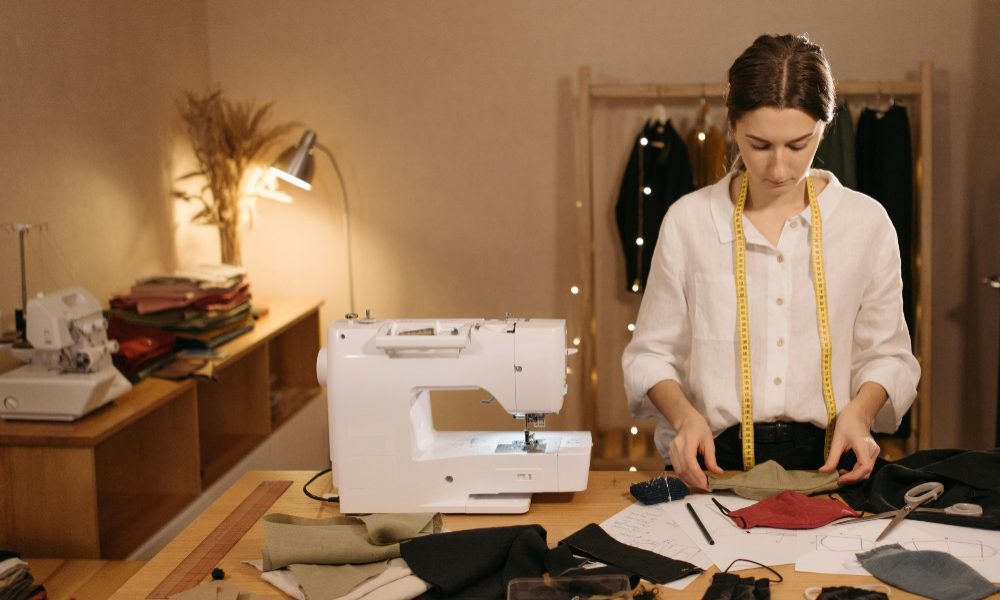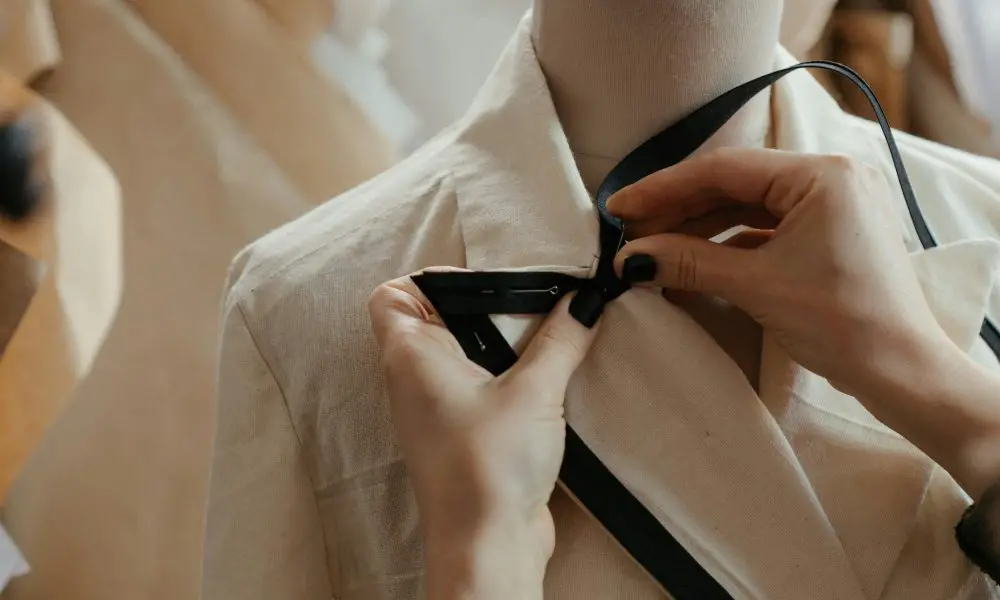Interfacing is a special fabric that gives structure and shape to clothing and projects. Using it the right way can totally change your sewing game!
Here’s a quick overview of what we’ll cover:
- What interfacing does and why it’s super useful
- Five easy tips for working with interfacing like a pro
- How to choose the perfect interfacing for your project
Ready to take your sewing to the next level? Let’s dive in!
What is Interfacing and Why Use It?
Interfacing is a thin fabric that you iron or sew onto the wrong side of other fabrics. It provides stability, structure and shape.
Think of a shirt collar or those crisp flaps on a jacket pocket. Interfacing gives those sections their neat, polished look and prevents them from flopping or wrinkling.
5 Tips for Sewing with Interfacing

Tip 1 – Use the Right Type
There are different interfacings for different purposes. Woven, non-woven, fusible, sew-in…the options can seem confusing at first.
The easiest way to choose? Look at the fibre content of your main fabric and buy similar interfacing. Cotton for cotton, synthetic for synthetic fabrics. That way, they’ll both behave the same way when washed or dried.
Tip 2 – Pay Attention to Weight
Interfacing comes in different weights or thicknesses, just like regular fabric. Use a lightweight interfacing for dresses or thin fabrics. A heavyweight one works best for sturdy items like jackets or vests.
If the interfacing is too thick, it can make fabric look stiff or bulky. Too thin and it won’t provide enough structure. Goldilocks was right – you’ve got to find the one that’s “just right”!
Tip 3 – Press With Care
Many interfacings are iron-on or fusible. This means you can easily adhere them to the wrong side of the fabric by using the heat from an iron.
But be careful! Use the right heat setting and press firmly without dragging the iron. This will melt the adhesive evenly onto the fabric. Let everything cool completely before moving on.
Tip 4 – Sew Smart
For sew-in interfacing, use a smaller stitch length than normal. This will prevent the stitching from perforating the interfacing and keep it looking crisp.
Always sew from the outer edges toward the centre to reduce bubbling or puckering. And never pull or stretch interfaced sections while sewing – that can distort the shape.
Tip 5 – Interface in Sections
For larger areas like collars or cuffs, cut the interfacing into curved sections first. This makes it much easier to turn corners or navigate tricky shapes.
Interface each section separately before assembling the full piece. It takes a bit more time but guarantees a flawless result with nice, crisp edges.
Test Different Interfacings
There’s no one-size-fits-all when it comes to interfacing. Experiment with a few different types and weights to see what works best for your project and fabric.
Ask at your local fabric store for samples you can try. Who knows, you might just find your new secret sewing weapon!
FAQs
What is interfacing used for in sewing?
Interfacing provides structure, shape and stability to clothing and sewn projects. It’s used for collars, cuffs, pockets, and anywhere you need crisp, neat folds.
How do I choose the right interfacing?
Match the fibre content of your main fabric to the interfacing. Use lightweight for thin fabrics and heavyweight for sturdy projects like jackets.
Can you see or feel interfacing?
No, interfacing should be hidden between the main fabric layers. When applied properly, you won’t see or feel it from the outside.
Wrapping Up
You’ve now got the keys to achieve perfect structure using interfacing. Remember – choose the right type, watch those weights, press carefully, sew smart, and interface in sections.
With a little practice, your sewing will look bakery-window neat every time. So what are you waiting for? Get interfacing and start sewing like a pro!
***
Main image: pexels




